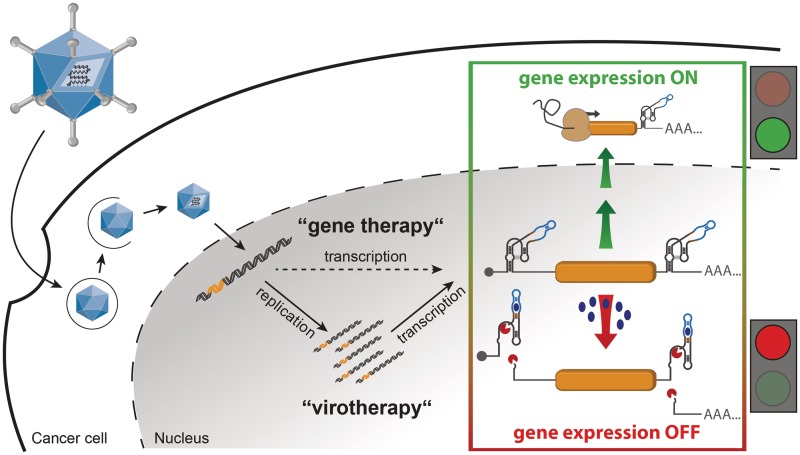Figure 1.
Schematic outline of our strategy for aptazyme-regulated transgene expression in mammalian cells by adenoviral vectors (AdVs) or oncolytic adenoviruses (OAds). In our strategy, control of transgene expression by replication-deficient AdVs and replication-competent OAds is achieved by insertion of an aptazyme, a synthetic ligand-dependent self-cleaving ribozyme, into the 5′- and/or 3′-UTR of the transcription unit. Upon infection, the viral genome is transmitted to the nucleus, where replication occurs for OAds in tumor cells, but not for AdV. Then, transgenes are transcribed. The applied OFF switch, given by an aptazyme, allows for transgene expression in the absence of ligand (gene expression ON). Upon addition of the ligand (e.g., the small molecule theophylline), the aptazymes can fold into an active conformation and mRNA self-cleavage occurs (gene expression OFF).

